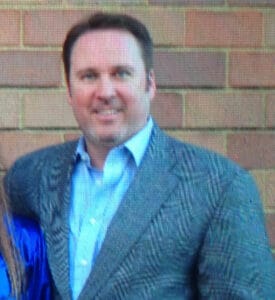Sponsored by Turning Point Justice
The asset protection department at Sears Holdings faces a unique set of security challenges, but it’s similar to many others in one way—it is gravitating toward a more strategic approach to security. “Approximately three years ago, we started transitioning from a more traditional security focus to a broader asset and profit protection focus,” says Scott Glenn, chief security officer for Sears Holdings Corporation.

It’s perhaps the Holy Grail of modern security management—moving away from security that is purely reactive to a more thoughtful and proactive approach, one that aims to maximize the strategic value of security. Part of getting there for Sears Holdings means embracing a new approach to managing cases of minor retail theft.
The company, which operates Kmart and Sears stores nationwide, is the largest retail participant by store count in the Crime Accountability (CA) Partnership Program, which provides first offenders a chance to stay out of the court system by completing an education program delivered by the National Association for Shoplifting Prevention (NASP) and paying restitution to retail victims. Sears Holdings currently utilizes the program in about 40 percent of its stores and plans a methodical roll out to every location. The program seemed tailor made for a company trying to manage security more strategically. “When we started looking at external theft and how we treated it, the program seemed a natural fit within our broader asset protection vision,” said Glenn.
Sears Holdings started conversations in 2014 with CA Partnership Program partners NASP and Turning Point Justice, and Glenn said he was immediately impressed. “For me, two things really stood out. There were significant benefits for the actual offender, and the technology that was used to walk the offender through the process seamlessly integrated with our existing case management system. Those were clear differentiators from some of the other programs out there.” Glenn admits to some initial trepidation as to how the company’s legacy systems might integrate with Turning Point’s technology but found that “Turning Point’s technology folks bent over backwards to work with ours.”
The Turning Point Cloud JusticeTM platform guides asset protection associates and offenders through the process, and includes an engaging, thoughtfully produced video to describe the program. Glenn said the video is “much better than having a store employee read from a script and asking offenders to sign here.” He notes, too, that the process has alignment points throughout, which ensures that the offender “understands each step along the way, so they can’t come back later to say they didn’t understand or agree to the commitment.”
Sears Holdings is a data-focused company and is finding that metrics reveal the program is working on several fronts. For example, Glenn says internal analysis indicates that his department is saving the equivalent of more than 600 days worth of work hours by avoiding court time, travel costs, and other time consuming aspects of their prior approach. The finance people are pleased as well because recovery from stores using the CA Partnership Program outperforms stores that still use traditional civil recovery services, even though “that’s certainly not the reason we’re doing it,” says Glenn.
He believes it is the obligation of the security industry to take a more holistic approach to managing shoplifting, one that includes trying to put first-time offenders on the right track. “Some people make bad decisions; and if we’re not involved in a positive way, we leave them to the mercy of the criminal justice system. I believe this just creates a cycle of future offenders. We have a responsibility to these individuals not to let a single mistake scar them for the rest of their lives,” said Glenn.
The CA Partnership Program has also impressed the Sears Holdings’ team, particularly because of the “soft” benefits it has generated. Letters arrive weekly from prosecutors and law enforcement agencies to thank the company for the drop in shoplifting arrests and the reduction in calls for service; letters that have generated positive press for the company. Glenn still remembers the first letter he received—a “gushing” note from the sheriff in Hillsborough County, Fla., who couldn’t believe what was happening in his area as a result of the program. “He was seeing a 36 percent reduction in calls to our stores, He wanted us to know how much he appreciated what we were doing, and asked if there was anything he could do to help market the program to other retailers.”
The positive response from law enforcement isn’t purely a “feel good” benefit, according to Glenn. “When we do ask for support [from law enforcement], we find we get a better response and more priority,” he said. “When we need something in larger, more complex cases, we see that we’re getting more attention.”
Although results from CA Partnership Program participation have been uniformly positive, Glenn said that he did face a roadblock during the pilot phase. Some veterans in the organization held the view that the CA Partnership Program meant that the company was going soft on shoplifters. “I think if I could do it over, I would have spent more time up front in laying the foundation for the program and maybe better explaining the benefits of the program to our field teams.”
As far as advice for his industry counterparts, Glenn thinks—at the very least—retailers owe it to themselves to examine the Crime Accountability Partnership Program. “Every one of my peers should take the time to assess this program and examine it from a customer relations viewpoint, a financial viewpoint, and from the perspective of law enforcement relations. They should carefully assess how the partnership might add value to their own program.”
Read Part 1 or Part 2 of this article.